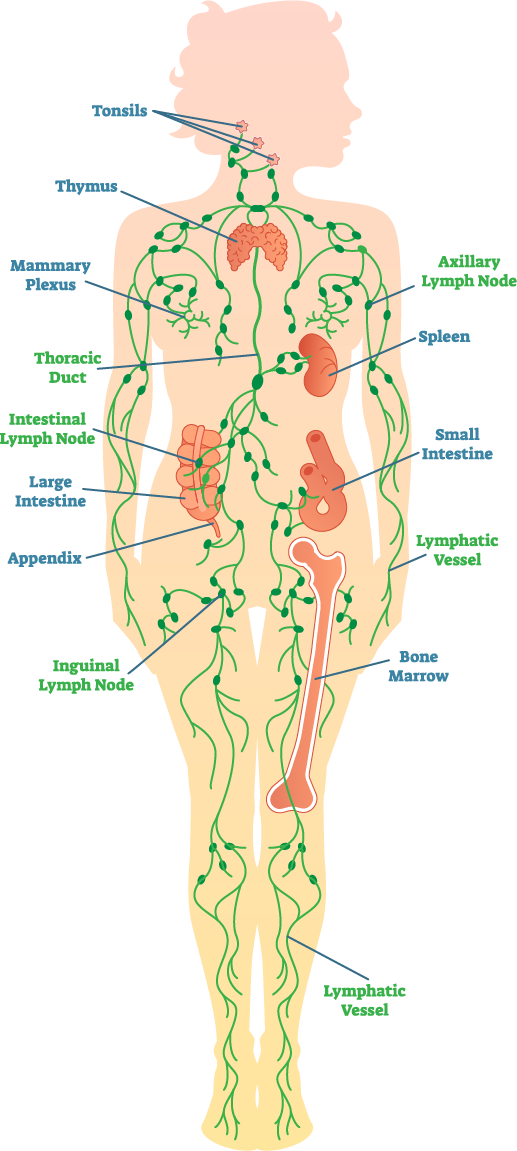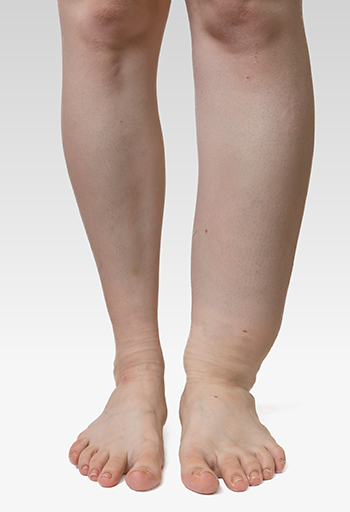
New Video Raises Awareness of Cancer and Lymphedema
A new video featuring Kathy Bates, actor, cancer survivor, and national spokesperson for the Lymphatic Education and Research Network (LERN), is raising awareness about cancer and lymphedema (swelling in the body due to build-up of lymph fluid). As an ovarian and breast cancer survivor diagnosed with lymphedema, Kathy discusses how cancer treatments and the removal of lymph nodes can affect the lymphatic system and helps educate patients about the symptoms of lymphedema. Key points in the video include encouraging cancer patients to talk with their medical team about options to prevent lymphedema or check for early signs to increase the chance of better managing the disease
Lymphedema
Kathy Bates and Lymphedema
Actor and cancer survivor Kathy Bates talks about lymphedema in this video.
Cancer or cancer treatment can cause lymphedema. We answer common questions about lymphedema and offer tips for managing lymphedema.
What Is Lymphedema?
Lymphedema is swelling due to build-up of lymph fluid in the body. Lymph nodes act like a drain in your sink. If the drain is clogged, the fluid cannot drain. It usually happens in the arms or legs, but can occur in other parts of the body. Lymph fluid is part of the lymph system that carries fluid and cells that help fight infections throughout the body. Sometimes this swelling develops quickly, or it may develop slowly over several months.
What Causes Lymphedema?
Lymphedema can be caused by cancer or by cancer treatment.
- Sometimes a cancerous tumor can get big enough to block the lymph system.
- Surgery to remove cancer may also remove some of the vessels that carry the lymph fluid. This can cause the fluid to build up in surrounding tissues.
- Radiation treatment can damage the lymph vessels, resulting in too much lymph fluid in the tissues.

Diagram of the lymph system.
Can Lymphedema Be Prevented?
Before you have surgery or radiation treatment for cancer, ask your doctor what can be done to lower the chances that you will get lymphedema.
What Are the Symptoms of Lymphedema?
The symptoms of lymphedema may include—
- Your arm, leg, or other part of your body has a little swelling at first, but gets bigger over time.
- The skin in that area feels tight, and sometimes has a tingling sensation.
- The arm or leg with lymphedema feels heavy.
- Clothing and jewelry fit more tightly on the affected area.
- The skin looks thicker or leathery.
If you notice any swelling after cancer treatment, ask your doctor what you can do to keep it from getting worse.
What Health Problems Can Lymphedema Cause?
- Lymphedema raises your risk of getting an infection in the swollen area. This happens because the cells that prevent infection can’t reach that part of your body.
- Wounds may heal more slowly on the part of your body that has lymphedema.
- You may feel upset, depressed, embarrassed, or angry about the lymphedema.
- The joints in the part of the body with lymphedema may feel stiff or sore.
I Think I Have Lymphedema. What Should I Do?
It is very important to see a doctor right away to find out why you have swelling. You should make sure there is no other cause of the swelling that needs immediate treatment, like a blood clot.
How Is Lymphedema Diagnosed?
First, your doctor will examine you and ask you when you first noticed the problem. If your arm or leg is swollen, your doctor may measure it to compare it with your other arm or leg. Usually, if your swollen arm or leg is 2cm (about 4/5 of an inch) bigger than your other arm or leg, you have lymphedema.
Your doctor may also suggest other tests to find out if you have lymphedema and if so, what is causing it. Lymphoscintigraphy is an X-ray that uses radioactive material to see if the lymph vessels are blocked. Computed tomography (CT) scans and magnetic resonance imaging (MRI) can take pictures of the swollen area to find out why the lymph vessels are blocked.

This photo shows a person with lymphedema in the left leg.
How Is Lymphedema Treated?
At this time, there is no cure for lymphedema. The goal of treatment is to reduce the swelling or keep it from getting worse, and to relieve symptoms. Lymphedema can be treated with—
Exercise. Moving your swollen arm or leg may help the lymph fluid to drain, thus reducing the swelling.
A compression sleeve or stocking. This garment fits tightly on your swollen arm or leg, helping the lymph fluid flow out.
Massage therapy. A special kind of massage called manual lymph drainage can help push the lymph fluid out of the swollen part of your body.
A pneumatic pump. A machine inflates a sleeve that you place on your swollen arm or leg, helping lymph fluid flow out.
Weight loss. In patients who are overweight, lymphedema related to breast cancer may improve with weight loss.
Surgery. If your lymphedema is severe, your doctor may suggest that you get an operation. Several options are available. For more information, visit Johns Hopkins Medicine’s Lymphedema: What Are Your Surgical Options?
Cancer treatment. If a cancerous tumor is causing the lymphedema, the cancer is treated.
Tips for Living with Lymphedema
The keys to managing lymphedema are preventing infections and allowing fluids to flow through the swollen area.
Prevent Infections
- Keep your skin clean, and use lotion to keep it moist.
- If you get a small cut, clean it right away and apply antibacterial ointment and a bandage.
- Don’t get needle sticks (vaccines or blood tests) in the swollen area.
Allow Blood and Lymph Fluid to Flow Freely
- Don’t wear tight clothing or jewelry.
- If you have lymphedema in one arm, have your blood pressure taken on, and blood drawn from, the other arm.
- If you arm or leg is swollen, elevate it above your heart when possible.
More Information
- Lymphedema (National Cancer Institute)
- Lymphedema (Mayo Clinic)
- Treating Lymphedema (Johns Hopkins Medicine)
- Lymphedema (American Cancer Society)
- Frequently Asked Questions about Lymphedema (Lymphatic Education & Research Network)
- Lymphedema (JAMA Oncology)






















.png)











No hay comentarios:
Publicar un comentario